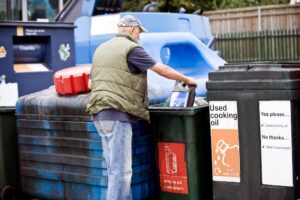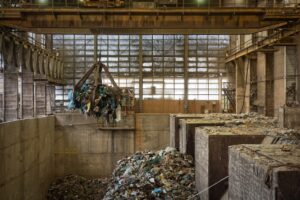Why Sustainability Requires a Holistic Approach
The urgency of sustainability has never been greater. Climate change, pollution, biodiversity loss, and deforestation threaten ecosystems and human well-being. While individual actions matter, creating a truly sustainable world requires systemic change across agriculture, transportation, manufacturing, energy, and social structures. By combining sustainable farming, circular economy principles, low-impact transportation, and social justice, we can build resilient communities and protect the planet for generations to come.
This guide explores interconnected solutions that individuals, businesses, and governments can adopt to create a future where people and the planet thrive together.
Sustainable Agriculture: Feeding the World Without Destroying It
Food production is one of the most resource-intensive human activities, accounting for significant greenhouse gas emissions, land use, and biodiversity loss. Sustainable farming offers a pathway to nourish people while protecting ecosystems.
Organic Farming
Organic farming avoids synthetic pesticides, fertilizers, and genetically modified organisms (GMOs). Instead, it relies on natural methods like crop rotation, composting, and biological pest control. These practices protect soil health, encourage biodiversity, and reduce chemical runoff into waterways. While yields may sometimes be lower, long-term soil fertility and ecosystem health make organic farming a cornerstone of sustainable agriculture.
Agroforestry
Agroforestry integrates trees into farming systems. Planting trees among crops or pastures improves soil stability, prevents erosion, and increases biodiversity. Farmers can harvest fruits, nuts, or timber, diversifying their income while sequestering carbon. Beyond environmental benefits, agroforestry supports climate resilience by creating microclimates that shield crops from extreme weather.
Regenerative Agriculture
Regenerative agriculture goes beyond sustainability to restore degraded ecosystems. Practices like no-till farming, cover cropping, rotational grazing, and compost application rebuild soil organic matter, enhance biodiversity, and capture atmospheric carbon. This approach not only reduces harm but actively regenerates ecosystems. Many companies and farmers worldwide are adopting regenerative practices to secure food systems for the future.
Technology for Sustainable Agriculture
Emerging technologies amplify these practices. Precision agriculture uses GPS, sensors, and drones to monitor soil health and crop growth in real time. Farmers can then apply water, fertilizers, and pest control only where needed, reducing waste and lowering emissions. Advances in AI and data analytics further help optimize resource use while boosting yields.
Circular Economy: Designing Out Waste
Traditional economies follow a linear model: take, make, use, and dispose. The circular economy replaces this model with one that keeps resources in use for as long as possible, designs out waste, and regenerates natural systems.
Reducing Waste
Small lifestyle shifts — like choosing reusable bags, refillable containers, and composting food scraps — collectively make a big difference. On a larger scale, businesses are redesigning packaging to be biodegradable or endlessly recyclable. Reducing food waste, which accounts for nearly 8% of global greenhouse gas emissions, is also critical. Meal planning, smarter storage, and better supply chain management help conserve resources.
Recycling and Repurposing
Recycling materials like paper, plastic, and metal reduces the demand for virgin resources, though recycling alone is not enough. Repurposing — such as transforming shipping containers into homes or using textile waste for new garments — creates innovative solutions while conserving materials. Businesses in construction, fashion, and tech are experimenting with creative repurposing to advance circularity.
Product Design for Longevity
Circularity starts at the design stage. Products built to be durable, repairable, and recyclable extend their lifecycles. Companies like Patagonia and Fairphone are proving that consumer demand exists for repairable products, setting a precedent for industries that have long profited from disposability.
Sustainable Transportation: Moving Without Harming
Transportation contributes roughly a quarter of global emissions. Rethinking how we move people and goods is vital to building a sustainable world.
Public Transportation
Buses, trains, and subways reduce the number of cars on the road, cutting emissions and congestion while providing equitable access. Expanding affordable public transit also supports social equity, ensuring mobility for all communities.
Active Transportation
Walking and biking are zero-emission options with health benefits including improved cardiovascular function, reduced stress, and greater physical activity. Cities that invest in safe pedestrian and cycling infrastructure reap both environmental and public health rewards.
Electric Vehicles
Electric vehicles (EVs) are a growing solution for reducing emissions. When powered by renewable energy, EVs can dramatically cut lifecycle emissions compared to gasoline cars. With costs dropping and charging infrastructure expanding, EVs are becoming increasingly accessible. However, the full sustainability potential of EVs depends on responsible mining and battery recycling — areas that require ongoing innovation.
Social Justice: The Human Side of Sustainability
Sustainability is incomplete without equity. Marginalized communities often bear the brunt of environmental degradation — from polluted air and water to climate-related disasters. Addressing these inequities is central to building a just and sustainable future.
Environmental Justice
Environmental justice ensures that no group is disproportionately burdened by pollution or climate impacts. Communities of color and low-income populations frequently live closest to industrial zones, highways, or toxic waste sites. Advocating for clean air, safe water, and fair resource distribution ensures sustainability benefits are shared by all.
Policy and Advocacy
Lasting change requires systemic shifts. Policies that incentivize renewable energy, penalize polluters, and support regenerative agriculture can accelerate the transition to sustainability. Grassroots movements, NGOs, and conscious consumers play a role in holding governments and corporations accountable. Advocacy links individual actions to systemic transformation.
Final Thoughts: A Collective Path Forward
Building a sustainable world requires collective participation. Farmers adopting regenerative methods, businesses embracing circular design, governments enacting climate policies, and individuals making conscious lifestyle choices are all pieces of the same puzzle.
The road to sustainability isn’t linear or uniform, but it is achievable. By embracing sustainable agriculture, circular economy principles, cleaner transportation, and social justice, we can create systems that work for both people and the planet.
The call to action is clear: rethink how we grow, consume, move, and advocate. A sustainable world is not just an environmental necessity — it is the foundation for healthier communities, stronger economies, and a livable future for generations to come.








Reader Interactions